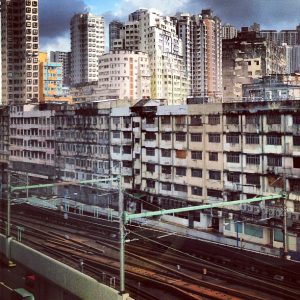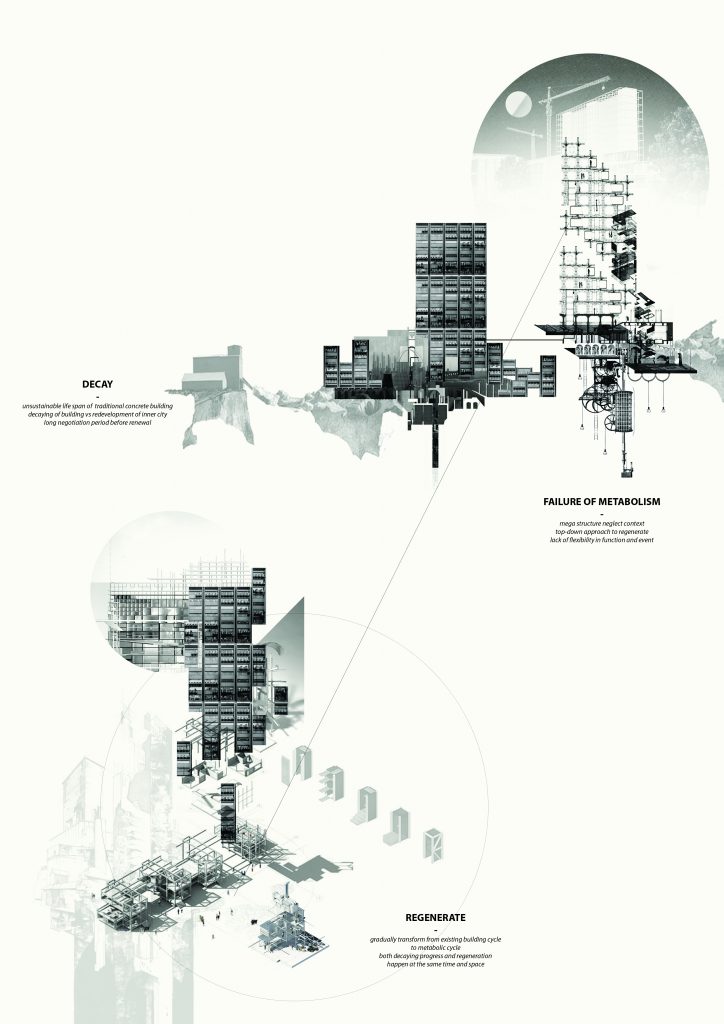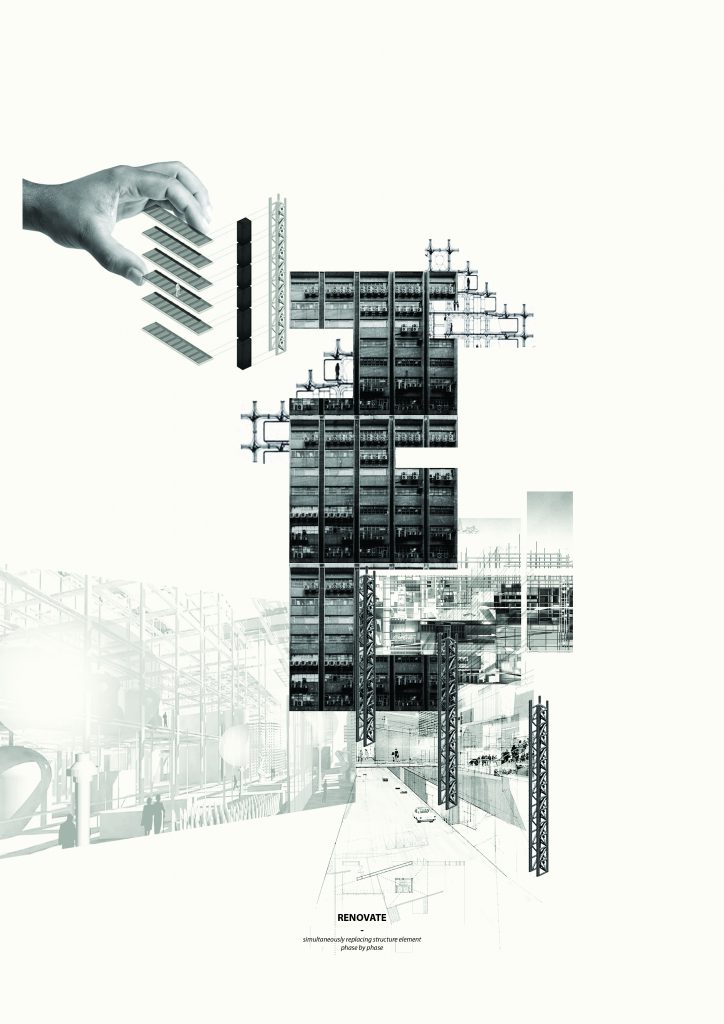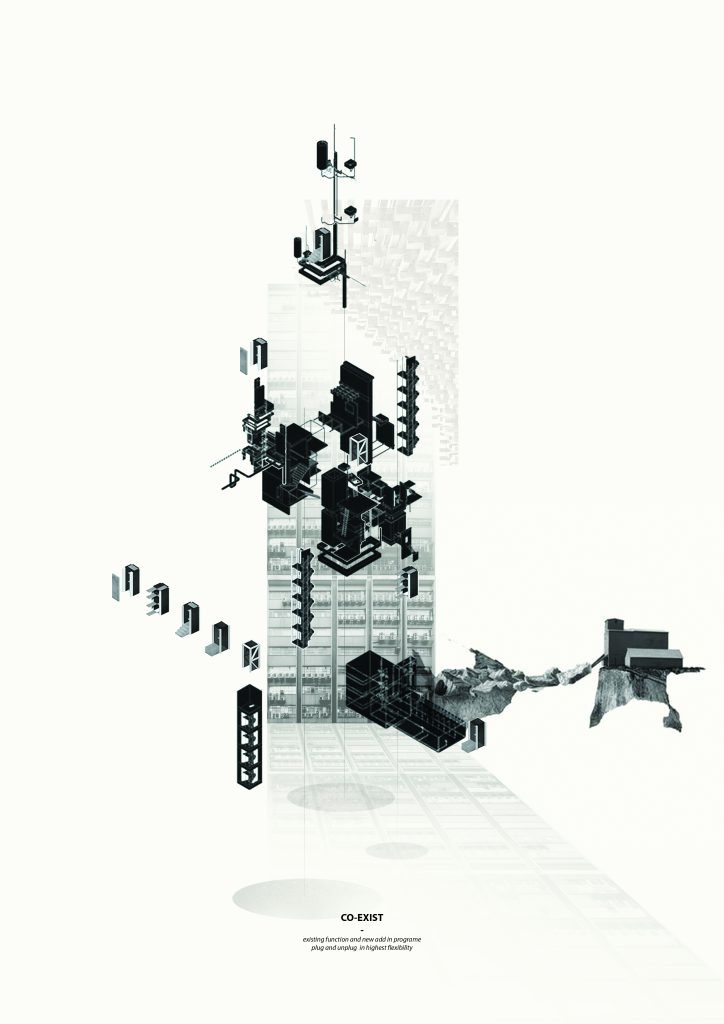Adaptive Metabolism in regenerating decaying industrial building in Hong Kong
|
The thesis is to critically examine the notion of sustainable architecture by rereading Metabolist theories and method. To explore ways to regenerate decaying industrial building with the adaptive approach in cope with the innovation of metabolic structure system.
Industrialization prospers Hong Kong in the early 1970s but sharply declined in 1990s due to the relocation of a substantial amount of production process to mainland China. About 75% of the industrial building in Hong Kong will reach the 50-year building cycle in coming decade and became vacant or under-utilized. Despite that, Government tried to widen permissible uses in order to re-zoned the industrial area for future development. Yet the redevelopment of the existing industrial building regulated in only two main ways : Renovation with a minor alteration or Rebuild after demolished the entire existing building. Both treatments cannot achieve the ultimate goal in sustainable redevelopment.
Could there be an alternative way in between Renovation or Rebuild ?
On top of that, fragmented ownership and lack of financial support raised the difficulties to proceed redevelopment. Meanwhile, the low rent attracts low-return creative industry where complex culture relationship happened. As a result, the building remained untouched due to the separation of ownership which cannot reach a coherent decision for redevelopment. The decaying buildings’ vacancy rate progressively rises until the last ownership moved out who cannot withstand the poor condition which results in a waste of land space resources. Hence, a flexible prolonged building cycle is required in cope with the resilience in terms of buildability and diverse cultural habitat.
Could the decaying building partially reconstruct at the same time as to adapt the uncertainty in fragmented ownership distribution ?
Metabolism had long been defined as a failure in the result of dissolving local cultures and collegial connections. Yet Tange expressed that ‘ cities did not redevelop as a result of urban plans’ but instead ‘a product of the power of relationships’ which criticized the reconstruction planning after WWII. He believed that Metabolism is a solution in connecting individual and fundamental cultural relation from a rebirthed land. Whereas the Sky House by Kiyonori Kikutake demonstrated an first expressive prototype of ‘cell’ in Metabolic principles which suggesting expandability in the structural system in 1958. It follows the systematic ‘growing’ logic in the regeneration of buildings. Although the following proposals like Metabolism 1960 : A Proposal for a New Urbanism remain in utopian and visionary, the systematic idea still express the aspiration of prolonging building cycle in a symbolic sense.
Could Metabolic system adopt in regenerating the decaying building with cultural resilience?
Outline – Mapping: The existing context of industrial zone in HK which includes the practices in renovation and redevelopment cycle; usage – Analysing: The generic structural system of industrial buildings; program ;cultural complexity; typology – Exploring: Alternative ways in regenerating building life cycle; treatment to prolong building life cycle – Experimenting: Prototype in testing continuous structure elements; building cycle; phasing studies which cope with different structural system happened within the building – Visualizing: Scenario of reconstruction phasing; co-existence of different program typology; adaptive structural system; metabolic building life cycle
Reference Project Japan : Metabolism Talks… by Rem Koolhaas and Han Ulrich Obrist (2009) Ideas for the Reorganization of Tokyo City by Kiyonori Kikutake (1959) Megastructure : urban Futures of Recent Past by Reyner Banham (1976) |





One Comment